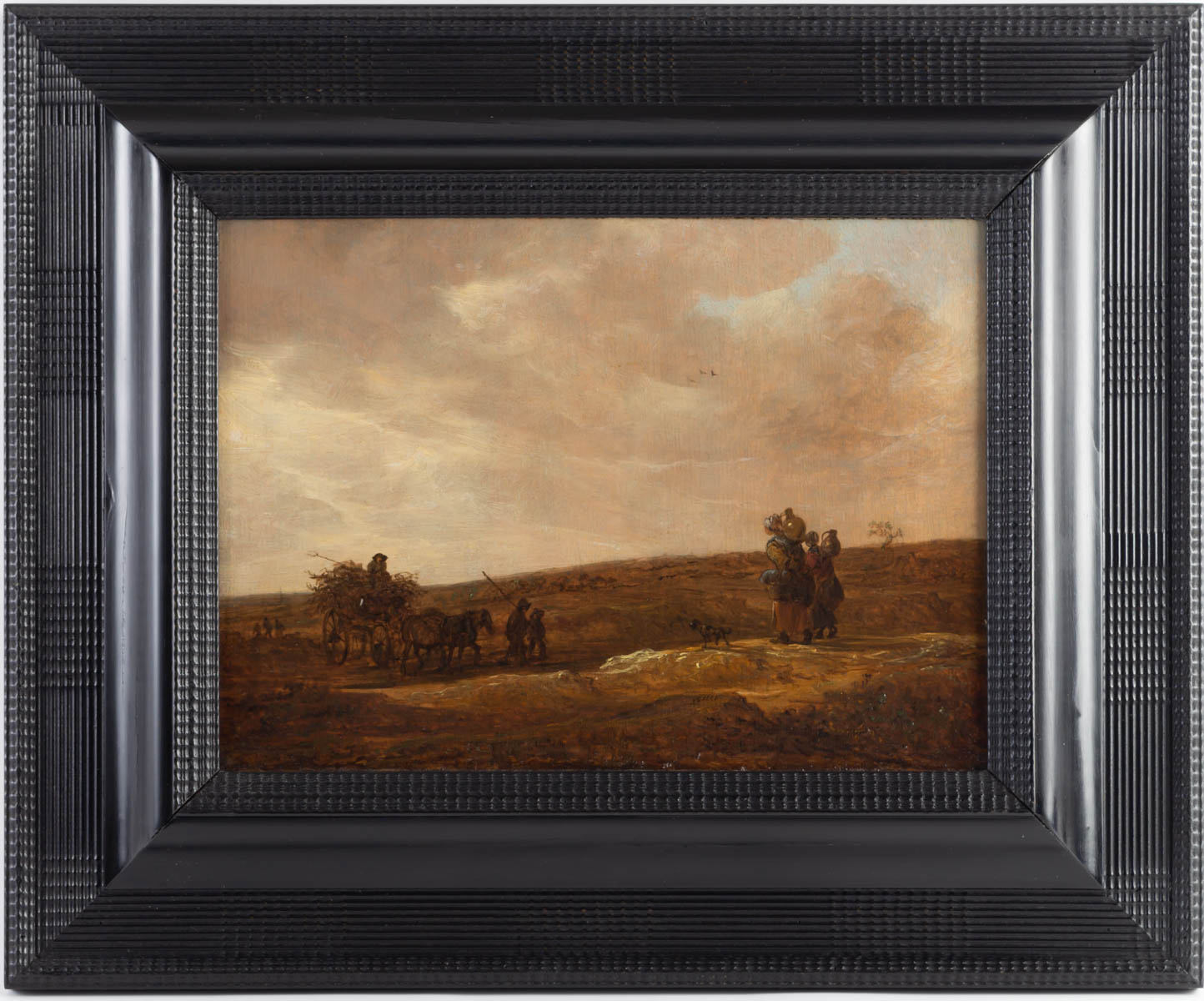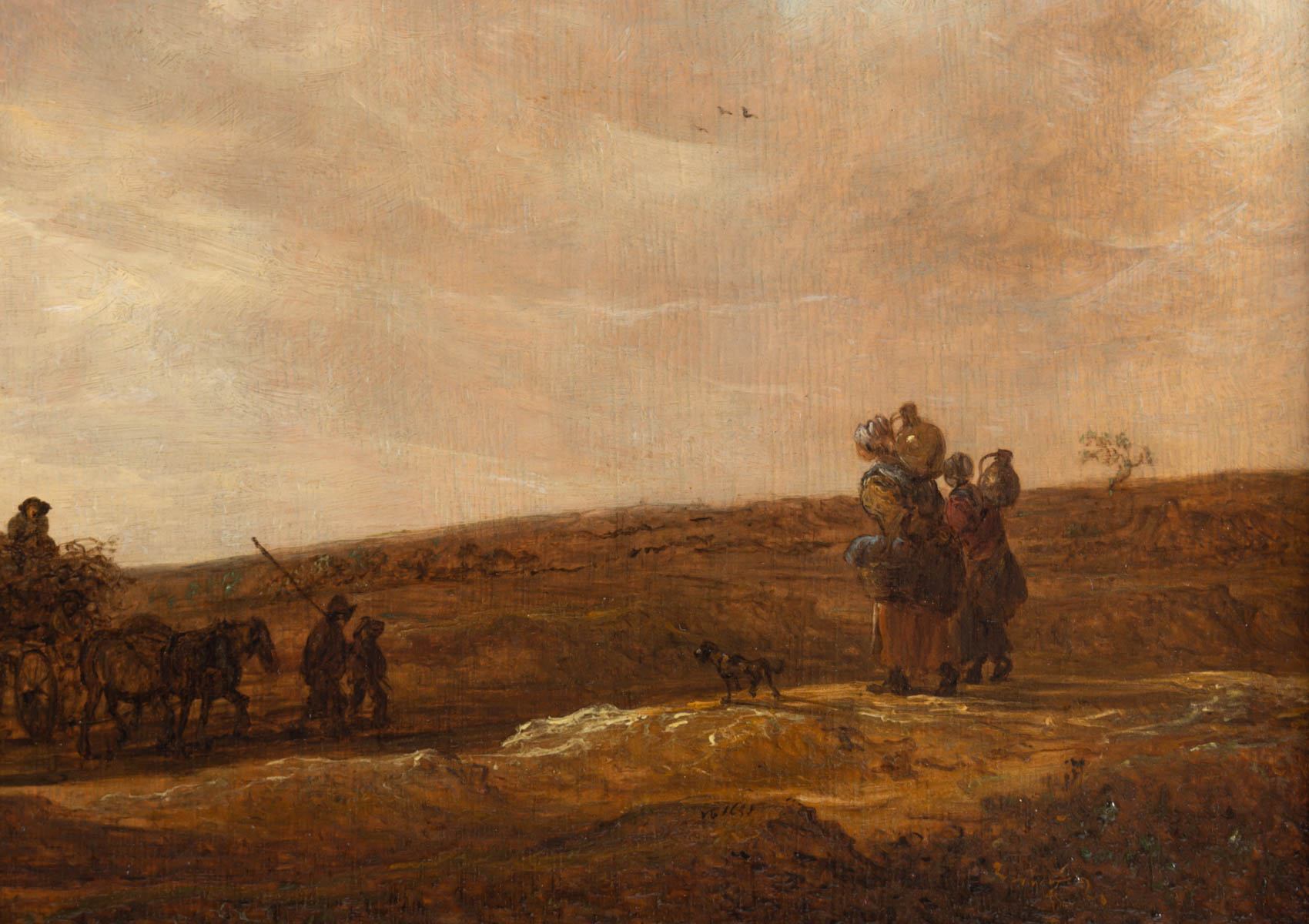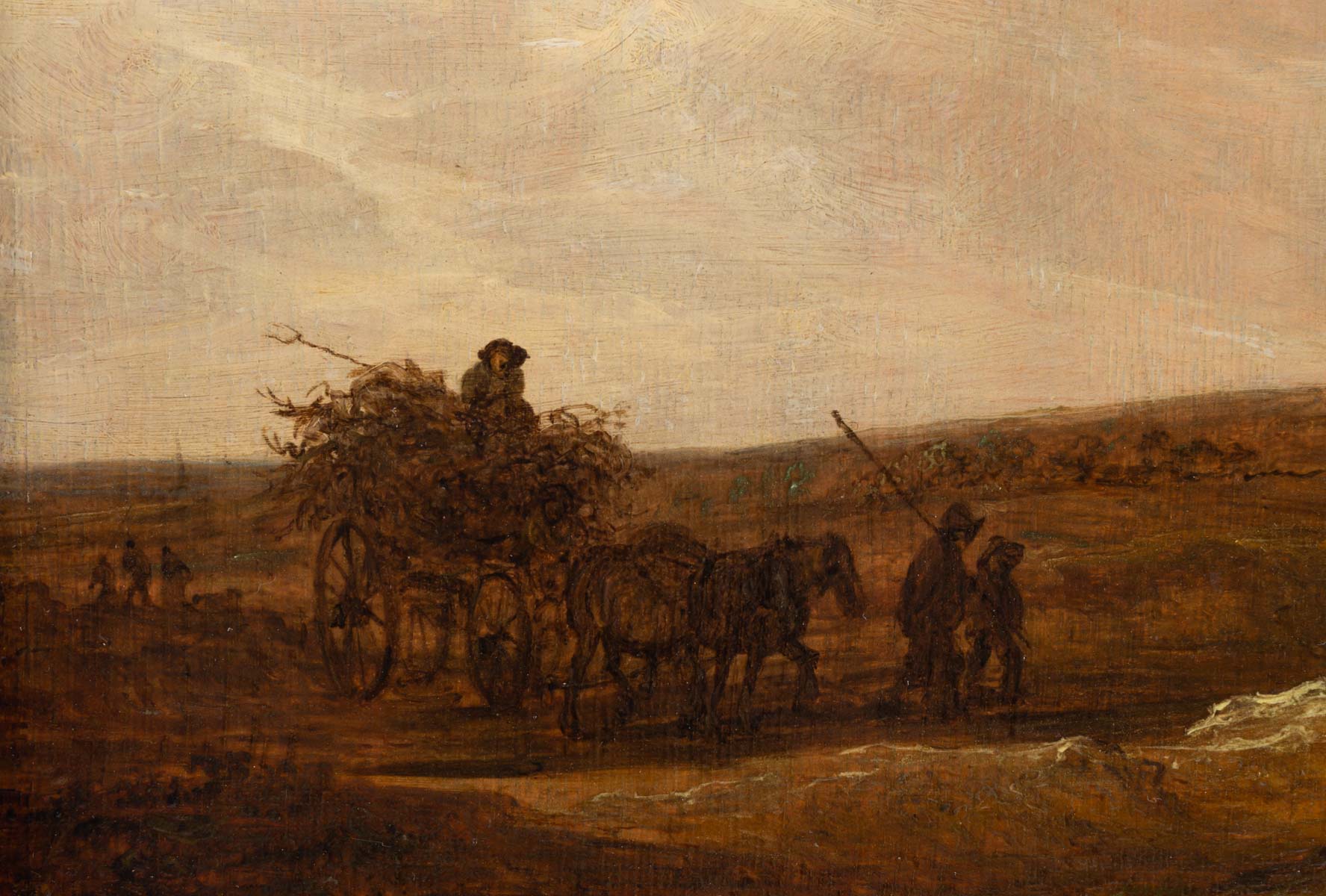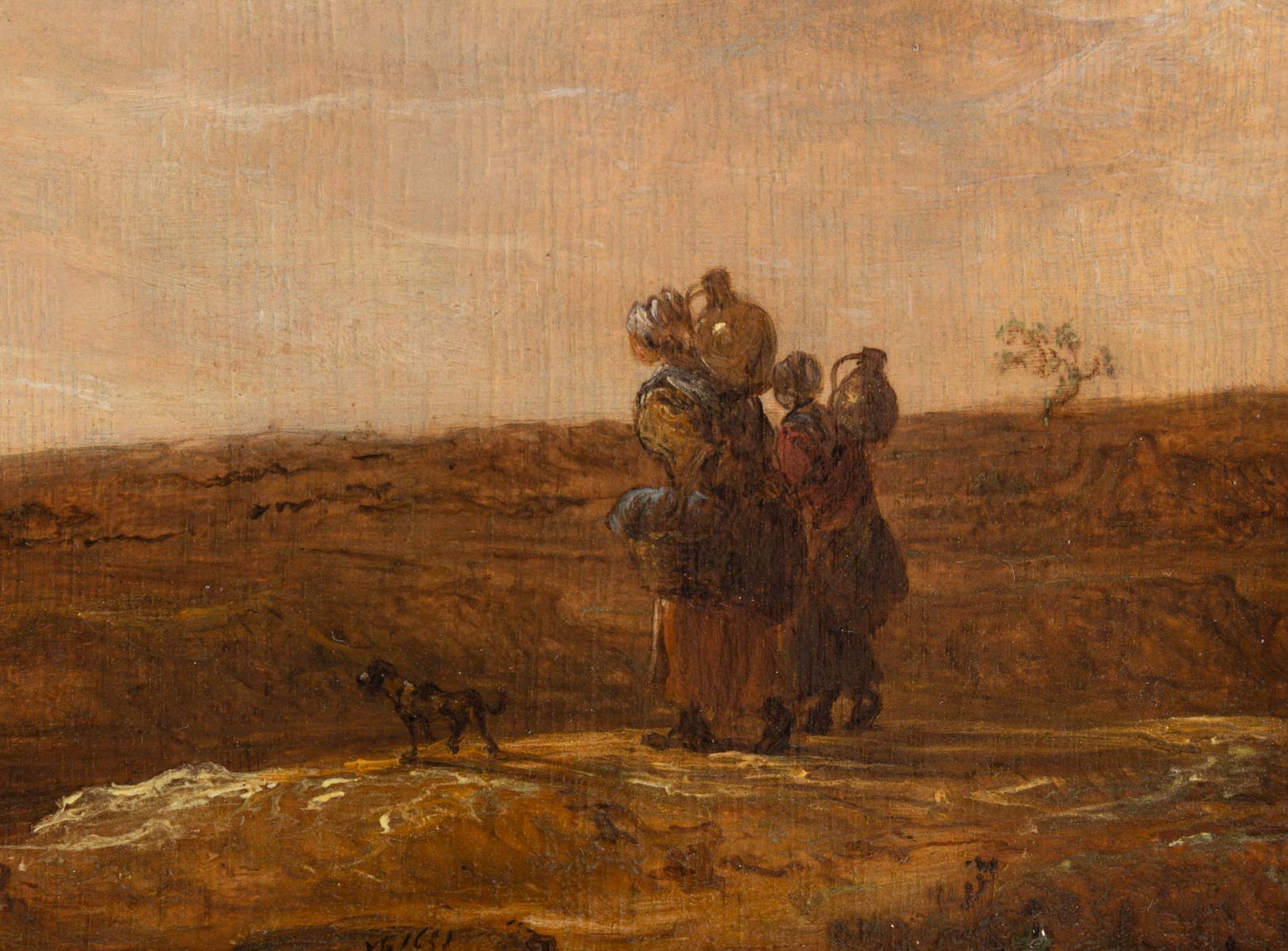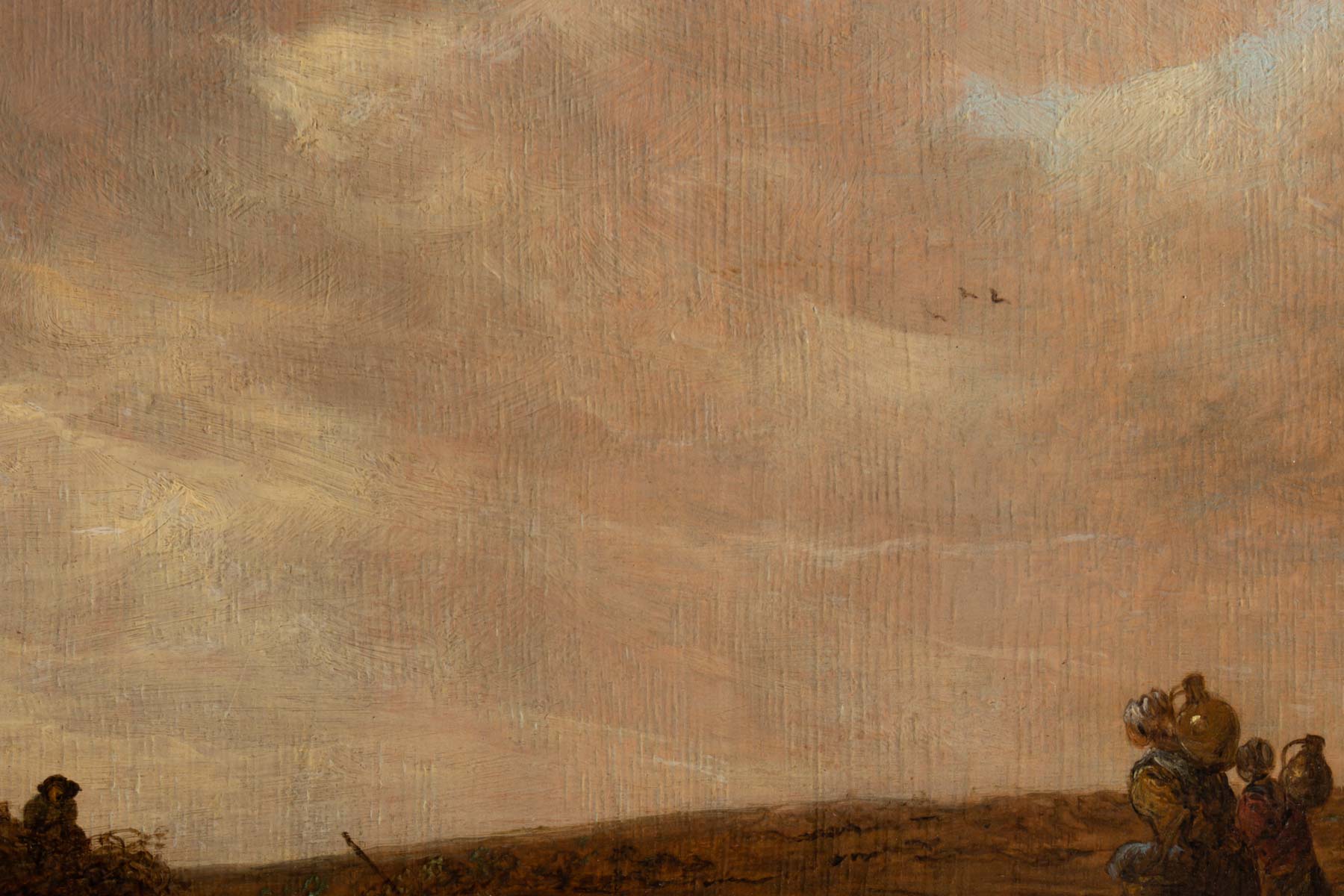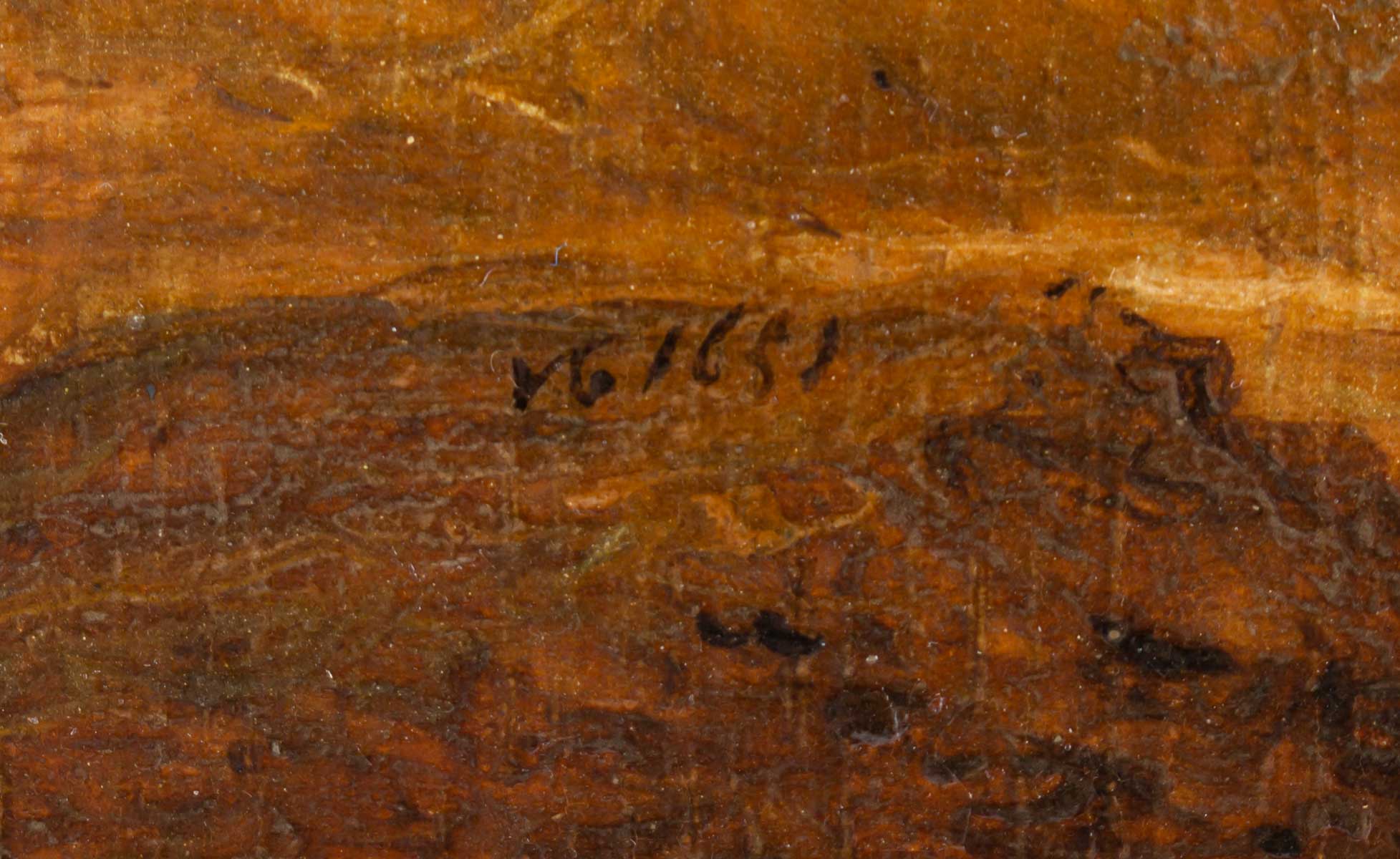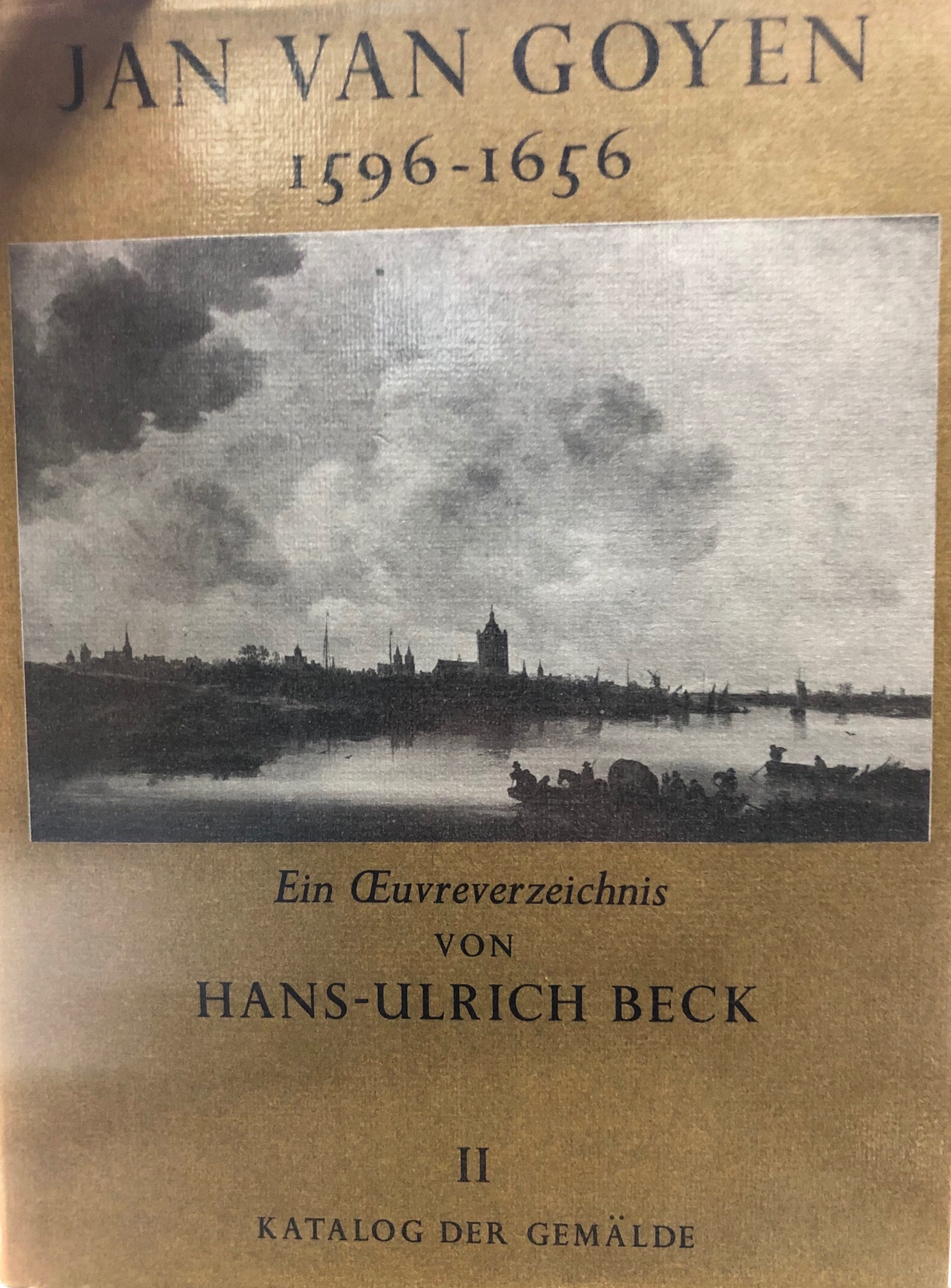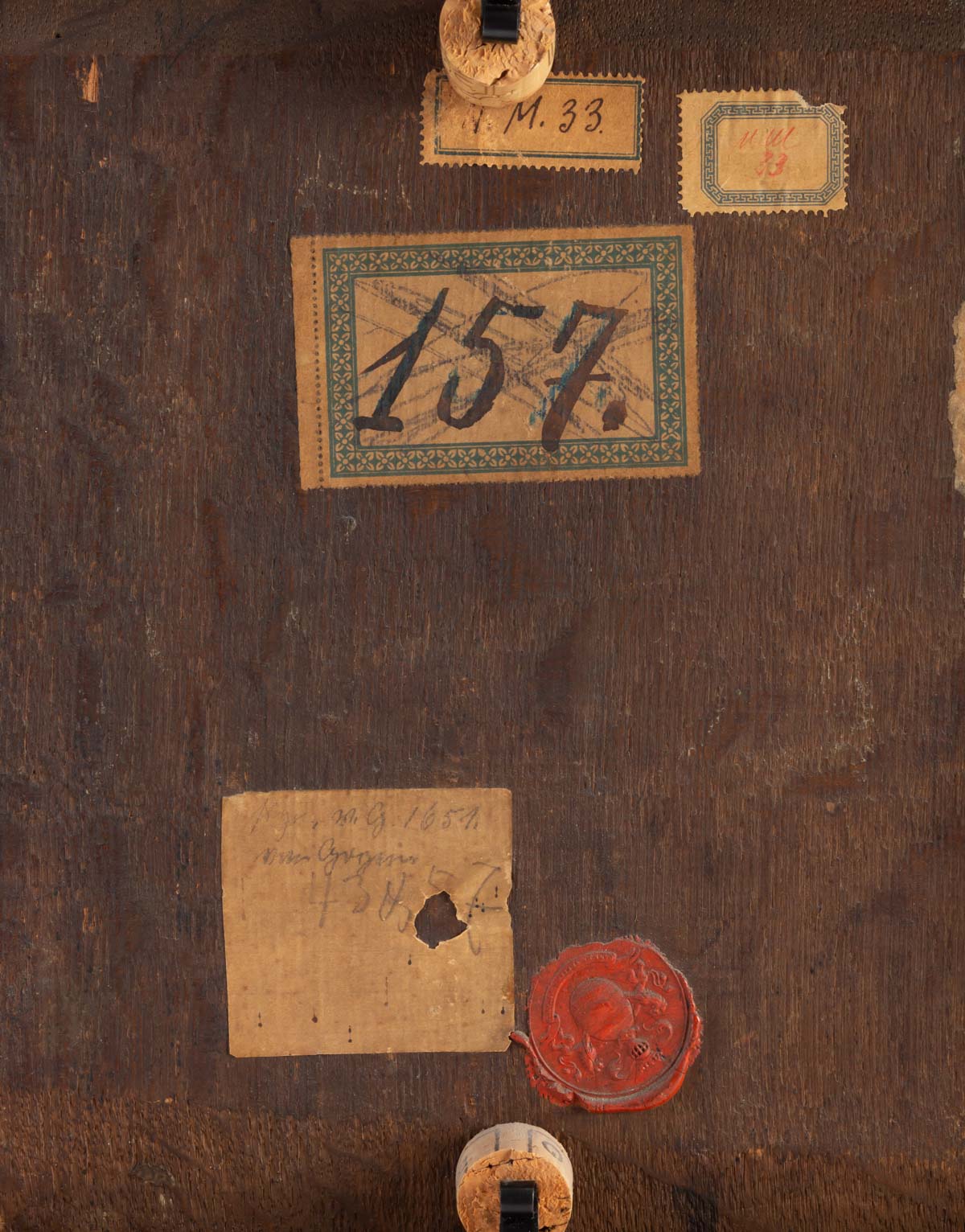Jan VAN GOYEN
” On the way ” – Dated 1651.
Oil on panel monogrammed V.G. and dated lower right.
Dim: 24 x 33.5 cm
With frame: 42.5 x 52 cm.
On the back are old labels bearing numbers, date and a wax stamp.
Price upon request
Work listed and reproduced in the catalog dedicated to this artist “J an Van Goyen 1596-1656 ” Ein Oeuvreverzeichnis von Hans-Ulrich BECK- Katalog Der Gemälde volume II, under number 1161 page 507.
Van Goyen, a great observer of the details of daily life, gives us a scene in motion, characterized by human activity. Two peasant women carrying jars and food, accompanied by a small dog, are walking. They pass three peasants guiding a cart of hay pulled by two horses; other characters walk away on the way.
The construction of the table is economical. We find there the alternation of dark and lighter bands, the monochrome color and a descending diagonal along which the characters are grouped. Clouds, typical elements of the Dutch landscape, glide across the sky which occupies three quarters of the composition. A warm golden light bathes the composition. All these elements are characteristic of his work.
Along with Salomon Van Ruysdael and Pieter Molijn, Jan van Goyen brought a new direction to Dutch landscape painting, which reached its apogee in the mid-17th century, abandoning the taste for the picturesque and decorative, bright colors, strong contrasts in lighting and fanciful perspectives for a modern naturalism, playing on monochromy, insisting on luminous values and giving ever greater prominence to the sky, horizon and clouds. He perfected this landscape formula which consists in reserving three quarters of the surface of the painting for the most elusive element, the sky. (Jacques Foucart curator, Louvre Museum)
Van Goyen is, in Haarlem, the pupil of Esaias van de Velde, who had a great influence on him. He settled in Leyden then in The Hague where he opened a studio frequented by painters such as Van der Kabel, Saftleven, Berchem, Jan Steen.
Very esteemed during his lifetime, he was admitted, immediately after his arrival in The Hague in 1631, to the guild of Saint-Luc, of which he became the dean in 1640. He traveled to France around 1615, to Flanders and to Germany.
Van Goyen’s first works, close to those of his master Esaias van de Velde and d’Avercamp, are genre scenes and are still of mannerist conception, such as these skating scenes where he delights in describing the anecdote, insists on architecture and uses a miniaturist approach.
Around 1626 or 1628, Van Goyen abandoned the small, precious formats and tondi of his early work, freeing himself from the picturesque element and using, along with Pieter Molijn and Salomon van Ruysdael, the diagonal to structure and unify the composition, as in the Village of 1626 (Lakenhal, Leiden), still full of precious details, but in which the figures are reduced and lose their anecdotal character.
From 1630, Van Goyen conquers a certain originality by seeking a more attenuated color. It is not so much the individual elements composing them as the overall impression that characterizes his paintings.
A prolific artist, his first signed work is dated 1620. He will subsequently create around a thousand paintings and eight hundred drawings.
Bibliography :
- H. Van der Waal, Jan van Goyen, met drieënvijftig afbeeldingen , “coll. Puck »
- JN Van Wessem, Jan van Goyen. Catalogus bij de tentoonstelling in Leiden en Arnhem, 1960.
Museums: Amsterdam, Zurich, Berlin. Carcassonne, Salzburg, Dresden, Louvre Museum, Paris, Brussels, Vienna
- Hermitage Museum, Saint Petersburg
- Museum of Fine Arts, Bordeaux
- Palace of Fine Arts in Lille.
- Mauritshuis, The Hague.
- Rouen Museum of Fine Arts.
- Bemberg Foundation, Toulouse.
- Quimper Museum of Fine Arts.
- Bernay Museum of Fine Arts.
- Museum of Fine Arts of Algiers.


